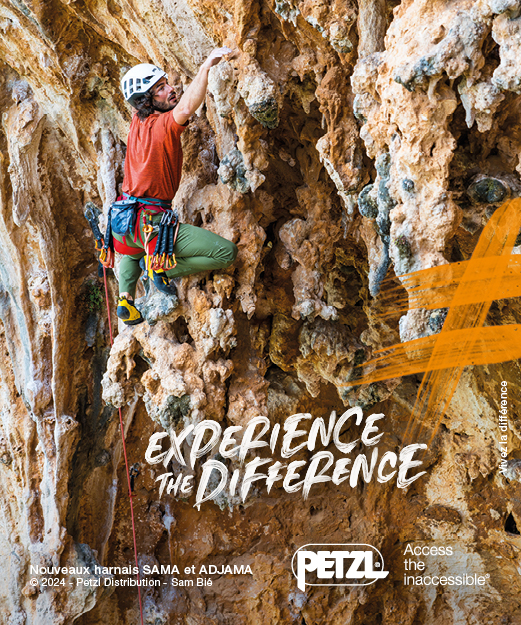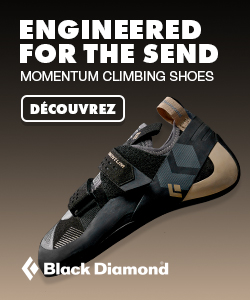Belay AI that understands climbing

The Norwegian tech start-up Belay AI is developing artificial intelligence providing real-time analytics and insights to help climbers enhance their performance. Belay AI is engineered to support your ascent, watch over your progress, and offer guidance. Always interested in new technologies, La Fabrique verticale went to meet Jorge Hermoso, who is heading this project.
How did you come up with the idea of creating an AI to improve climbing technique and movement? Are you a climber yourself?
While studying for my Masters Degree in Data Science and Machine Learning in Norway, I was also working as a climbing instructor at Oslo Klatresenter. Then the idea was kind of natural because when I wasn’t studying I was either climbing or working with climbing then I thought how can I combine these two things that I am passionate about. I started thinking about how AI could be applied to climbing. I wanted to create something that combined my expertise in AI with my love for the sport, something that could provide climbers with real, actionable insights into their movement and technique.

Can Belay AI also help with the analysis of physiological data?
Right now, our primary focus is on biomechanics analysis, understanding movement patterns, and climbing efficiency. This technology has the potential to improve how we analyze human biomechanics, not just in climbing but in other sports and physical activities as well. While we’re currently focused on climbing-specific applications, in the future, this could extend to broader areas of sports science and rehabilitation.
Is Belay AI primarily aimed at top athletes and coaches of national teams, or also at everyone?
BELAY AI means – B – Biometric, E – Evaluation and L – Learning, A – Analytics for, Y – You, powered by A – Artificial, I – Intelligence. The “For You” part is key. We want to make climbing analytics accessible to all climbers, regardless of experience level. Since it works with just a smartphone, there’s no need for extra gear or technical knowledge. A beginner can use it for simple, actionable feedback, while advanced climbers and coaches can get in-depth performance analysis. Our goal is to develop a comprehensive tool that adapts to different skill levels and needs.
Is Magnus Midtbø part of the team and how did he help you develop this AI?
Magnus has shown good interest in this technology. So if there is the possibility to do some more stuff together in the future that would be great. Collaborating with him has been great, he gave us great feedback personally, not only complimenting the technology but also helping us understand how we can improve. The same from his viewers. Many of them contacted us with a lot of feedback which is very valuable to better understand their needs and tailor our technology to best serve them. Also did a collaboration with the Norwegian National Team. And that has been very valuable in understanding how professional climbers coaches can use this technology to improve their climbing.
What would you say to someone who would tell you that AI will never replace the presence of a coach on-site and the human aspect of the relationship between an athlete and his coach?
I agree, AI isn’t here to replace coaches. It’s here to enhance coaching. As a climbing coach, I’ve seen firsthand how valuable human connection is for both personal and athletic development. Coaches provide mentorship, motivation, and expertise that AI alone can’t replicate. However, AI can be a powerful tool that addresses two major challenges in climbing training.

1. Access for Those Without Coaching
Not everyone has access to a coach, whether due to location, cost, or other limitations. Belay AI bridges this gap by providing guidance where coaching isn’t available. Climbers can receive movement analysis and actionable feedback. Helping them improve even if they don’t have in-person coaching.
2. Data-driven analysis and Visual Tools
Even for those who do have a coach, some climbing concepts are difficult to explain with words alone. Belay AI provides a visual breakdown of movement patterns, allowing climbers to see and understand their technique in a way that verbal instruction alone often can’t achieve. Coaches can also use this tool to track progress over time, identify inefficiencies, and make data-driven adjustments to training plans.
In the end, it’s about combining the best of both worlds, human intuition and connection with AI-powered insights, to make climbing training more effective, accessible, and data-driven.
Is Belay AI already available?
Right now, we’re still in the development phase. Conducting private trials with both recreational and professional climbers. We want to ensure that when we launch, the technology is as refined and effective as possible. That said, we’re aiming for a public release within the next few months, so stay tuned!








